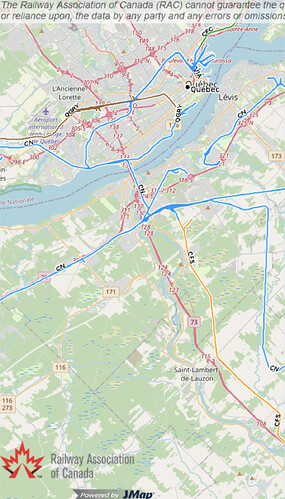Clay, I like yours too. Enough to say that any downstream parser might now consider both operator:short=* / operator=* and short_name=* tags alike (or pretty similar, or slicing with a high-precision knife of semantics — so we’re learning something right here and now). It seems likely ORM tips (heavily?) in the direction of rendering with the reporting_marks=* tag; that’s the issue (on GitHub).
I ask @wolfy1339 and any/all others, what do you think?
My opinion? Yes, ORM rendering reporting_marks=* (the tagging is certainly happening) makes sense to me. Such rendering will actually happen on ORM if so, in North America, as the tagging is (t)here. Supporting it over the continent-wide region where it happens, that makes sense. Our tagging is plastic, we “flex like this.” And this tag means a certain thing where we so denote (soon, maybe rendered in ORM). This is similar to Kanji (characters) being displayed with Japan.
Somebody (@Ferrocarriles_de_México, Geochicas, if you plural are around, someone from our LATAM community…) who knows more than I do about ferrocarriles en México (rail in México) is deeply welcome to chime in here. ¿Preguntas, alguien?
It’s nice to sharpen up our semantics of how we tag with greater precision. There really is such a thing as distinguishing operator=* of the line (with North America’s “particular method” of denoting a two-to-four character alphabetic moniker, we call these reporting_marks=*) from its name=* or short_name=*. And “around here” that’s done frequently, so this makes sense.
People talk about things (here sometimes, amongst ourselves…) about a certain specific topic, it gets noticed and incorporated as a certain amount of consensus. Wheels do turn around here! (Including at global, continental, national, regional and local levels).
Thanks, everybody. I enjoy this journey called OSM. Quite literally, together we make it work.
